Met’s “Kavalier & Clay” mixes stunning production with largely lightweight music
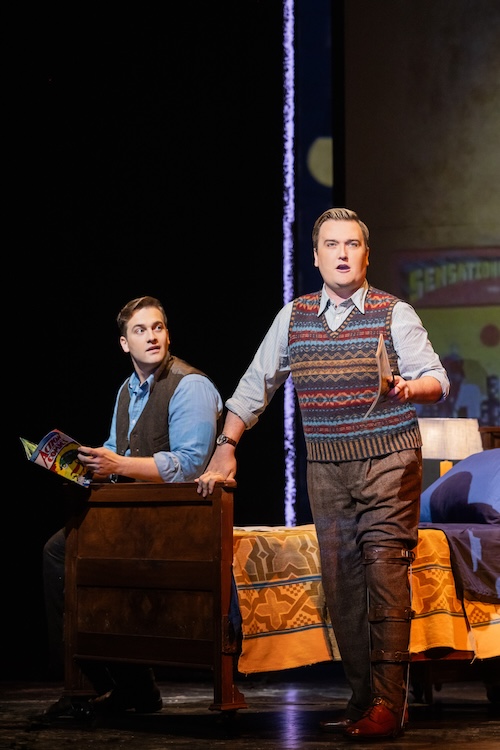
The best works of art, in any medium, are built to last. Their ideas and meanings communicate across eras and in the context of changing societies.
Michael Chabon’s Pulitzer Prize-winning novel The Amazing Adventures of Kavalier & Clay is one. The story tells of Joe Kavalier, a refugee from Nazi-occupied Czechoslovakia who, along with his cousin Sam Clay, creates a comic book character who rescues people from the Gestapo and concentration camps—a story that also wraps in creation of the comic book industry and changing social mores.
That novel is now an opera, commissioned by the Metropolitan Opera and opening the house’s new season Sunday evening. (The work premiered at Indiana University in 2024.) If composer Mason Bates and librettist Gene Scheer couldn’t envision what 2025 would be like when they started their work years ago, just putting the story and the protagonists on stage means showing people fighting against tyranny in a recognizably modern America. So what the opera is like is a question about more than the music, it’s about the production’s place in the now.
An impromptu, and, in some ways, ill-advised introduction from general director Peter Gelb turned up the spotlight on that. He came out on stage before the curtain to proclaim that “We stand for freedom of artistic expression.” This brought cheers, though Gelb never mentioned what might possibly threaten that freedom. In a real miscalculation he then introduced Senator Chuck Schumer, who harangued the audience by touting his Covid legislation from 2020 and name-dropping Jimmy Kimmel, while a substantial part of the crowd booed and jeered.
This was also misguided because the opera was both outside and beyond this. In two acts, Scheer’s adaptation elegantly and eloquently gets at both the personal and global tragedies and triumphs in the story. Bates’ score has a strong and energetic pace for most of the duration, and Bartlett Sher’s production is not just skillful and intelligent, but succeeds as an important dramatic voice in itself. The performance, which included notable debuts, came from deep inside the music and drama.
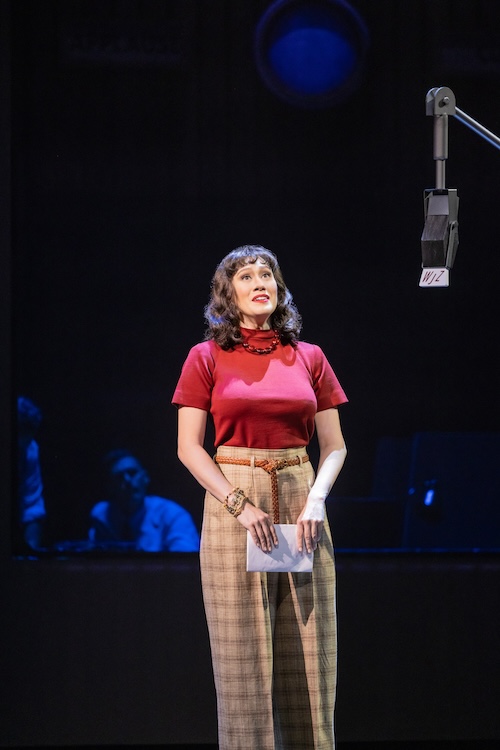
Making his Met debut, baritone Andrzej Filończyk is Joe, an artist and aspiring escapist who makes his way from Prague to Brooklyn in 1939. Sam is tenor Myles Mykkanen, who is slowed by childhood polio.
Joe plans on finding a way to get his remaining family, including younger sister Sarah (sung by soprano Lauren Snouffer in her house debut), out of Prague. In New York, the brothers launch The Escapist for Sam’s boss, Sheldon Anapol (the always-characterful baritone Patrick Carfizzi). Joe meets and falls in love with activist Rosa Saks (mezzo Sun-Ly Pierce), while Sam has an illicit affair with actor Tracy Bacon (baritone Edward Nelson), the radio voice of The Escapist.
For about three-quarters of the opera, all this really moves in a thrilling way that feels like modern American industrial and cultural society coming into its own in the 1940s. This is vocal writing as dialogue, and while the libretto doesn’t have the wise-ass snap of an RKO Radio Picture, Bates’ music does, even with awkward jazz-ish rhythms and phrases in the orchestra. Music director Yannick Nézet-Séguin couldn’t do much with these, yet otherwise there was great verve all night from the pit, and orchestra and singers had fine balance and a feeling of exactness in all their music.
The opening, literal, darkness of Prague gives way to a bright feeling in New York. Filończyk held on to the urgency his character faces, even through the excitements of the creation and popular success of The Escapist. Mykkanen was a fine complement, his part more lyrical against the forcefulness for Joe. While the latter is thinking of and singing about the past and his family in Europe, the former is thinking and singing about the possibilities of the future.
That’s the core of the drama, and the collision of the two produce some marvelous and wrenching moments. The big party scene that in the novel is an amazing look at American popular culture is in the opera an Act I art gallery fundraiser, hosted by Rosa. She is trying to finance the ship Ark of Miriam to carry refugee children, including Sarah, to America. It features Salvador Dali (tenor Efrain Solis, looking the part in his debut), and is where Joe and Rosa meet and first fall in love.
This is also the first of the very few aria-like moments. Rosa sings about the ship, and rescue, and the music slows down and opens up for the first time. There is finally a shapely vocal line that displays the voice, and Pierce sang with a lovely color and a feeling of grounding and grace. This is the musical high point of Kavalier & Clay and shows what had been missing up to that moment, the feeling that there wasn’t much real singing going on.
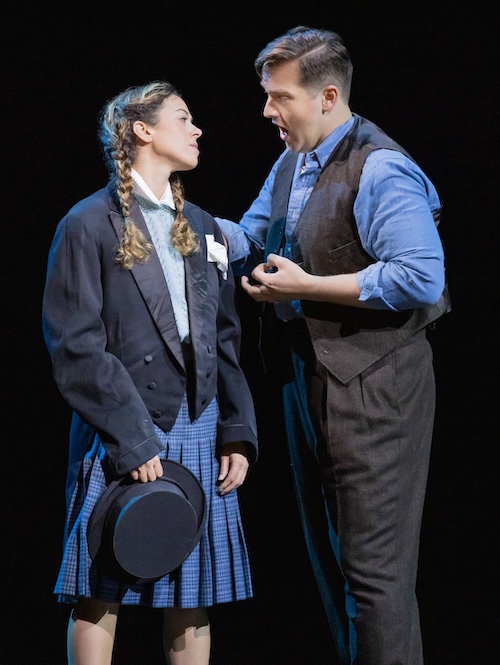
Bates’ pace precludes a lot of the possible pleasure of the voice and vocal expression. The balance between that and select big dramatic moments is conceptually effective. There are further, fine ones from Joe, wrestling with his despair, and a moving duet between Sam and Rosa, as they try to figure out the future.
But Bates, at least as yet, does not have the harmonic or vocal language to make the most of the story’s opportunities. Coming out of the indie-classical movement and with a background in electronic dance music, he uses lean harmonies and exact, simple rhythms. That’s not a problem in itself but his vocal phrases are mostly short and with predictable shapes. He writes opera like it’s pop music, the style sitting somewhere past music theater but not quite opera. It delivers plot and selected internal experiences, but there’s neither nuance nor large-scale harmonic resolution from the shadows of Prague to the sun of Long Island. Without expressive lines and harmonies, there’s a limit on the emotional power.
Sher’s production makes up for a lot of this. It’s rare to see staging not only handle so much of the drama—by design—but do it so well. Instead of singing about his escape, because his English is not yet strong Joe draws it for Sam, and the story comes through projected animation. The Escapist appears in brilliant costume from Jennifer Moeller (her debut) and punches some Nazis—always a crowd pleaser.
There is a beautiful moment when sparks fly between Joe and Tracy (Nelson was excellent, with strong singing and a combination of good humor and savoir fare) in front of a gorgeous animation of lightning striking the Chrysler building. And the height of tragedy in Act I, back at the art gallery, ends with an image of Sarah’s end that is haunting and deeply affecting. Snouffer’s gentle, ingénue-like singing had already been a bright spot in the performance, and this hit like a punch in the heart.
But the staging follows the score, and when the action slows in Act II there’s not enough there musically to keep the sensation of motion. The harmonies can underscore plot but aren’t enough to produce their own characterization and drama.
The final scenes are the parallel stories of Sam, Rosa, and Joe and Rosa’s daughter, while Joe and Tracy are fighting in the infantry in Europe. Both the music and the revolving stage start spinning in place, and the lack of operatic craft in the music becomes glaring. This is not a disappointment as it almost seems inevitable. There are some stunning moments and a lot to appreciate about Kavalier & Clay, though ultimately it’s a little less than the sum of the parts.
The Amazing Adventures of Kavalier & Clay runs through October 11. metopera.org
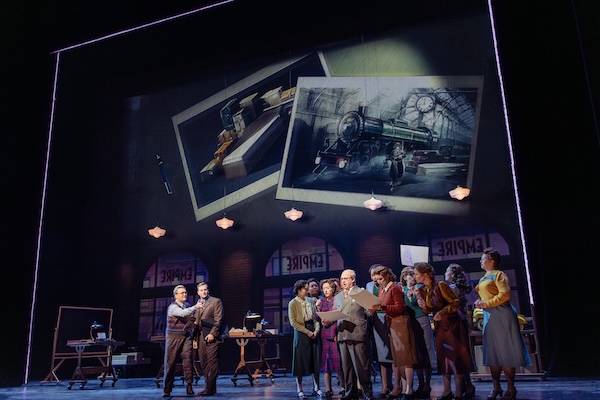




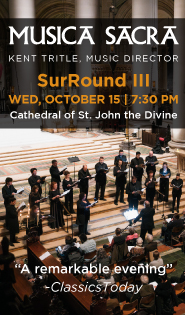


Posted Sep 23, 2025 at 12:37 pm by ToscasKiss
Thanks so much for this review. Though I’m not able to come to NYC to see the opera, I was very excited to learn that one of my favorite novels had been adapted this way. I hope this will be shown in cinema.
Thanks again for this detailed report!
Posted Sep 25, 2025 at 5:14 pm by Russell Platt
Thanks for this nuanced review, George. I’ll look forward to the livestream.
Posted Sep 28, 2025 at 6:37 am by John Lipsky
A reasonable review that is a bit too technical/critical. In particular, the first act is both riveting and moving. The staging is superb and innovative, the voices are all first rate — a pleasure in itself — and the story moves crisply, punctuated by some wonderful high points for Rosa, Joe, Sam and Sarah. In short, the audience found this act nothing short of thrilling.
The second act is more challenging, as the complexity of the story makes it move more slowly and the underlying emotions are less familiar ( the reuniting of Rosa and Joe, the loss of Tracy and the departure of Sam). But the production succeeded in conveying the essence of the novel effectively, and the audience responded with great enthusiasm.
Here’s an indication — I’d happily see this again. I can’t imagine anyone who attended wishing they hadn’t. To the contrary. And I can’t say that about some of the “war horses” of the Met’s repertoire.